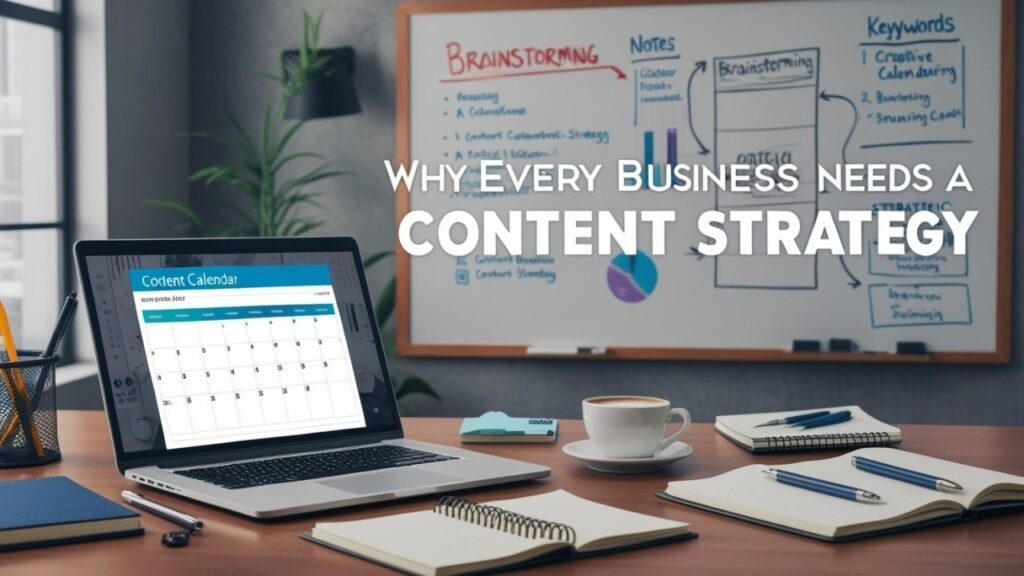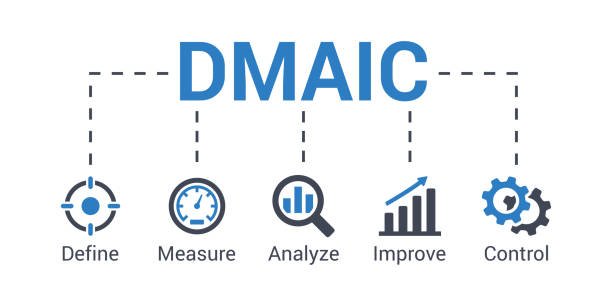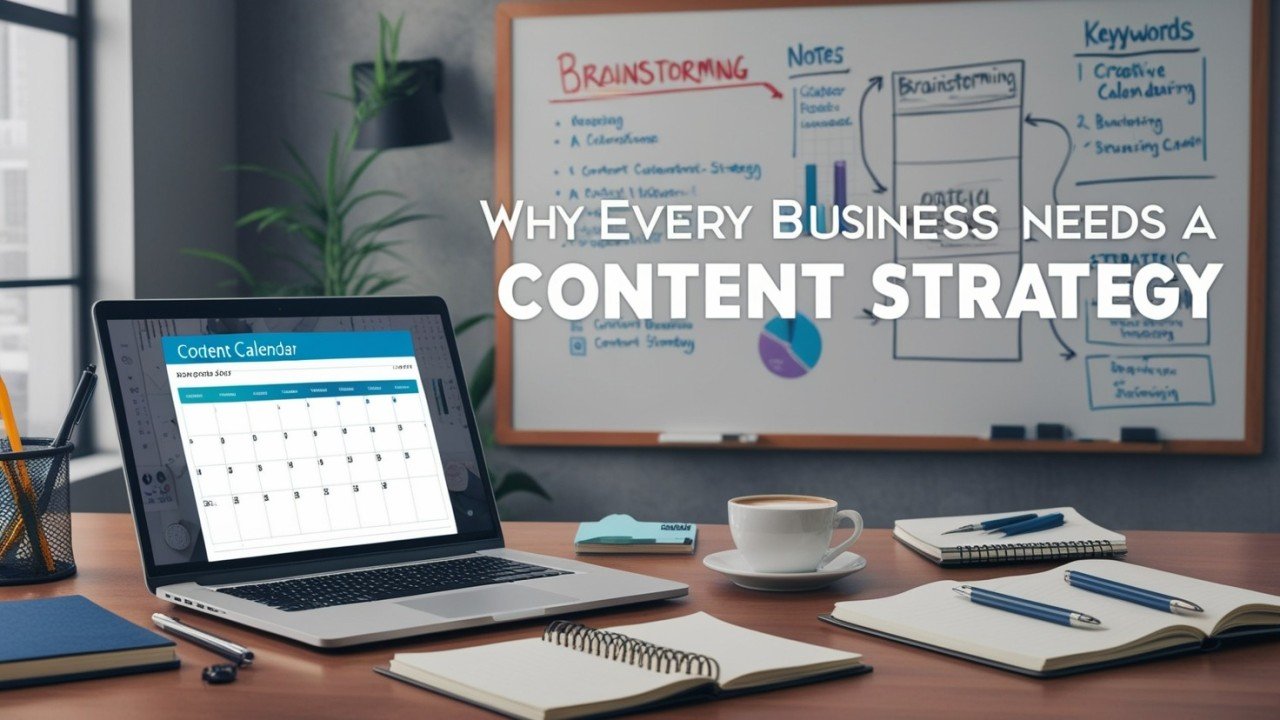6 Key Reasons Your Business Needs a Content Strategy for Success
Here’s the thing: creating content without a strategy is like throwing spaghetti at the wall and hoping it sticks. Sure, you might get lucky once in a while, but most of the time, you’re just making a mess.
With content marketing growing more competitive by the day, businesses need to step up their game. That’s where a solid content strategy comes in. It’s not just a plan; it’s the foundation that turns random posts into successful content that resonates with your target audience and drives real results.
If your business is still winging it when it comes to content, this article is for you. We’re breaking down the 6 key reasons why every business needs a content strategy, how it shapes your marketing goals, and why it’s essential for creating a solid foundation for your content marketing strategy.
Let’s dive in!

6 Reasons Why Every Business Needs a Content Strategy
Here are six key reasons why a solid content strategy is essential for any business aiming to succeed in today’s competitive landscape:

- 1. Aligns Content with Business Goals
- A content strategy ensures every piece of content you create ties back to your broader business objectives, whether it’s boosting brand awareness, driving traffic, or generating leads. It helps you focus on outcomes instead of just creating content for the sake of it.
- 2. Helps You Understand Your Target Audience
- Your audience is at the heart of your content marketing strategy. A strategy helps you define who they are, what they care about, and how your content can solve their problems. The better you know them, the more relevant and engaging your content becomes.
- 3. Ensures You Use the Right Platforms and Formats
- Not all content belongs on every platform. A content plan helps you choose the best channels (e.g., LinkedIn, Instagram, TikTok) and the most effective formats (blogs, videos, infographics) to reach your target audience.
- 4. Optimizes Content for SEO and Visibility
- With a focus on SEO, your content is more likely to rank higher in search results, making it easier for your audience to find you. A strategy ensures you’re using keywords, internal links, and structured content to improve discoverability.
- 5. Keeps Content Consistent
- Consistency builds trust and makes your brand more recognizable. A documented content strategy ensures that your tone, style, and publishing schedule stay steady across all platforms, helping you stand out in a crowded market.
- 6. Helps You Measure and Improve Performance
- A strategy lets you track what’s working and what’s not. By analyzing metrics like engagement, traffic, and conversions, you can refine your approach and maximize the impact of your content over time.
Each of these reasons highlights how a content strategy helps transform your content marketing efforts from random attempts to a streamlined process that drives real results.
1. Clear Goals Drive Real Results
Ever felt like your content is all over the place? That’s what happens when you don’t have clear goals. A solid content strategy starts by tying your content to your business goals. Without that, you’re just creating for the sake of it—and let’s be honest, that’s not doing your brand any favors.

Here’s why setting goals is so important: it gives your content purpose. Every blog post, video, or social media update should contribute to something bigger—whether it’s increasing brand awareness, driving traffic, or converting leads.
How a Content Strategy Helps You Set Goals:
- Start with the big picture: What do you want your business to achieve? Maybe it’s getting more email sign-ups or boosting sales.
- Break it down: From there, set specific, measurable goals for your content. For example, “increase blog traffic by 25% in the next 3 months.”
- Track your progress: Use tools like Google Analytics to see what’s working and adjust as needed.
Example:
Let’s say you run a fitness coaching business. A content strategy might set a goal to drive leads by publishing workout tips optimized for SEO. Over time, these posts attract your target audience, build trust, and lead to more sign-ups for your coaching services.
With clear goals, every piece of content becomes part of a bigger plan. You’re not just creating content—you’re creating results.
2. Understand Your Target Audience Inside-Out
Let’s get one thing straight: if you don’t know who you’re talking to, your content will never hit the mark. A solid content strategy helps you deeply understand your target audience, so you can create content that actually resonates.

Here’s the truth: Your audience doesn’t care about your goals—they care about how you can solve their problems. That’s why understanding their needs, pain points, and interests is the backbone of successful content marketing.
How a Content Strategy Helps You Understand Your Audience:
- Build detailed personas: Use data to create profiles of your ideal customers, including their age, interests, challenges, and what keeps them up at night.
- Use the right tools: Platforms like Google Analytics, social media insights, and keyword research tools can show what your audience is searching for and engaging with.
- Listen and adapt: Don’t just guess—actively collect feedback from your audience and adjust your content to meet their needs.
Example:
Imagine you run an online clothing store. By understanding that your target audience is eco-conscious millennials, you can create blog posts about sustainable fashion and Instagram reels showcasing ethically-made outfits. This type of content not only connects with their values but also drives brand awareness.
When you know your audience, you’re not just guessing—you’re creating content that speaks directly to them. And that’s how you build trust, loyalty, and engagement.
3. Choose the Right Platforms and Formats
Here’s the thing: not every platform is right for your business, and not every type of content works on every platform. This is where a solid content strategy shines—it helps you figure out where your audience is hanging out and what kind of content they actually want to see.

Without this, you’re just throwing content everywhere, hoping it sticks. But with a strategy? You’re focusing your efforts on the places that matter most.
How a Content Strategy Helps You Choose the Right Platforms and Formats:
- Map your audience to platforms: Research where your audience spends their time. For example, LinkedIn might be perfect for B2B brands, while Instagram or TikTok is ideal for visual or lifestyle content.
- Match the format to the platform: Each platform has its strengths. Use videos for Instagram, in-depth articles for your blog, and short, snappy posts for Twitter.
- Analyze competitor success: See what’s working for others in your industry and adapt it to your brand’s voice and style.
Example:
Let’s say you’re a small bakery. By focusing on Instagram, you can create mouthwatering reels showcasing your latest treats. Pair that with behind-the-scenes stories of how your goods are made, and you’ve got a recipe for engagement.
When you choose the right platforms and content types, you’re not just creating—you’re connecting. That’s how a content strategy helps amplify your reach without wasting time on platforms that won’t deliver results.
4. Optimize Your Content to Rank Higher on Search Engines
Creating amazing content is just the start. If no one can find it, it’s like shouting into the void. That’s where SEO comes in—and a content marketing strategy ensures your content is optimized to show up when your audience needs it most.

A business needs a content strategy that prioritizes SEO to boost visibility, drive organic traffic, and connect with the right audience at the right time.
How a Content Strategy Helps You Optimize for SEO:
- Focus on search intent: Identify what your audience is looking for—are they seeking information, comparing options, or ready to buy?
- Create topic clusters: Instead of standalone pieces, group related content around central themes. This boosts relevance and search engine rankings.
- Optimize as you go: Use tools like Ahrefs or SEMrush to research keywords, structure your content, and monitor performance.
- Repurpose and update: Regularly audit and refresh your existing content to keep it relevant and SEO-friendly.
Example:
A travel agency might notice their audience is searching for “budget-friendly destinations.” By creating a cluster of high-quality blogs covering topics like cheap flights, affordable hotels, and free activities, they not only rank for that keyword but also position themselves as a go-to resource for travelers.
With a solid content strategy, you’re not just creating content—you’re optimizing it to be seen and valued by both search engines and people. That’s the secret to successful content marketing.
5. Consistency Builds Trust and Recognition
Your audience isn’t just looking for great content—they’re looking for consistency. A documented content strategy ensures that your content is consistent in tone, quality, and delivery, making your brand more recognizable and trustworthy over time.

Think of your favorite brand. Whether it’s a podcast that drops episodes every week or a social media account that posts daily, their consistency is a big part of why you keep coming back. Your audience expects the same from you.
How a Content Strategy Ensures Consistency:
- Plan ahead with a content calendar: Schedule your posts, blogs, or videos ahead of time so you’re always on track, even during busy seasons.
- Batch your content creation: Produce multiple pieces at once to ensure you have a steady flow of content, no matter what.
- Stick to your brand voice: Whether your tone is professional, casual, or playful, a strategy keeps it consistent across all platforms.
Example:
Imagine you’re a fitness influencer. By sticking to a weekly schedule of posting workout videos and meal prep tips, your followers know exactly what to expect. That trust builds loyalty—and loyalty keeps them coming back (and sharing your content).
When your content delivery is reliable, your audience starts to see you as a dependable resource. And in a world full of scattered marketing, consistency sets you apart.
6. Measure, Analyze, and Improve Your Strategy
Here’s the thing: even the best content strategies aren’t set in stone. To stay effective, you need to constantly measure what’s working, analyze why it’s working, and refine your approach. A documented content marketing strategy makes this process seamless by setting clear metrics and tracking your progress.

Data isn’t just numbers—it’s the key to understanding how your content is performing and how you can make it even better.
How a Content Strategy Helps You Measure and Improve:
- Set measurable goals: Tie your content to key performance indicators (KPIs) like traffic, engagement, and conversions.
- Use analytics tools: Platforms like Google Analytics or HubSpot can help you track your content’s performance over time.
- Conduct regular content audits: Review your existing content to identify what’s driving results and what needs a refresh.
- Test and tweak: Experiment with new formats, platforms, or posting times to see what resonates most with your audience.
Example:
Let’s say you’re running a blog and notice that posts with “how-to” headlines consistently get more traffic. With this insight, you can double down on creating more instructional content and watch your numbers climb.
Refining your strategy isn’t about starting from scratch—it’s about building on what’s already working. With the right tools and a solid content strategy, you can continuously improve and stay ahead of the competition.
Conclusion
Let’s face it—without a solid content strategy, your content marketing efforts are like shooting arrows in the dark. You might hit the target once in a while, but more often than not, you’ll miss.
By developing a well-documented content marketing strategy, you’re not just creating content—you’re building a roadmap for success. From setting clear goals and understanding your target audience to optimizing for SEO and staying consistent, a strategy gives your content purpose, structure, and impact.
Here’s the bottom line: A business needs a content strategy because it saves time, maximizes resources, and drives results. Whether you’re looking to boost brand awareness, generate leads, or build trust with your audience, a strategy is the foundation that makes it all happen.
Take Action Now: Build Your Strategy
- Audit your existing content and identify gaps.
- Set specific marketing goals that align with your business objectives.
- Create a content calendar to plan and maintain consistent content delivery.
- Monitor, analyze, and refine your approach to keep improving.
If you’re ready to elevate your content game but don’t know where to start, consider working with a content strategy service provider or downloading a content strategy template to guide you.

Remember, the most successful content marketers aren’t just creating—they’re creating with intention. It’s time to make your content work smarter, not harder.
Disclosure: Our blog contains affiliate links to products. We may receive a commission for purchases made through these links. However, this does not impact our reviews and comparisons. We try our best to keep things fair and balanced, in order to help you make the best choice for you.







